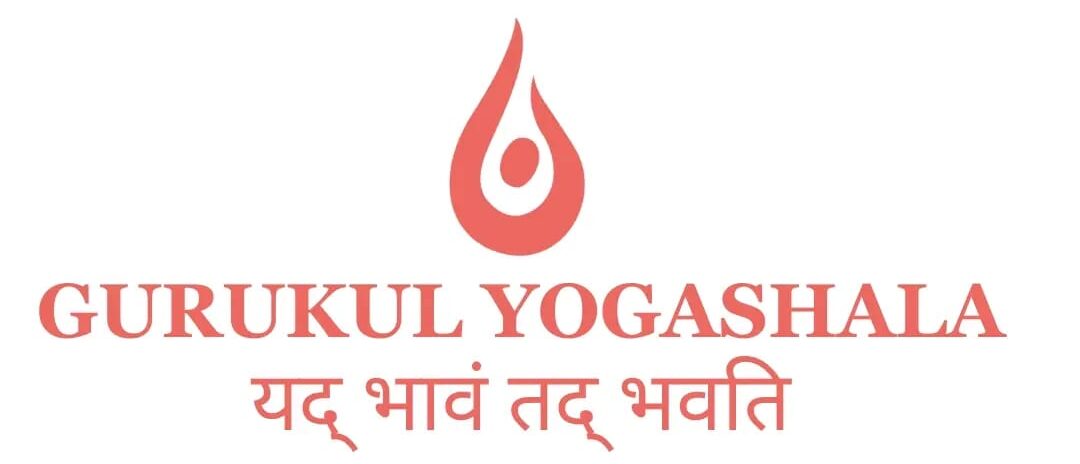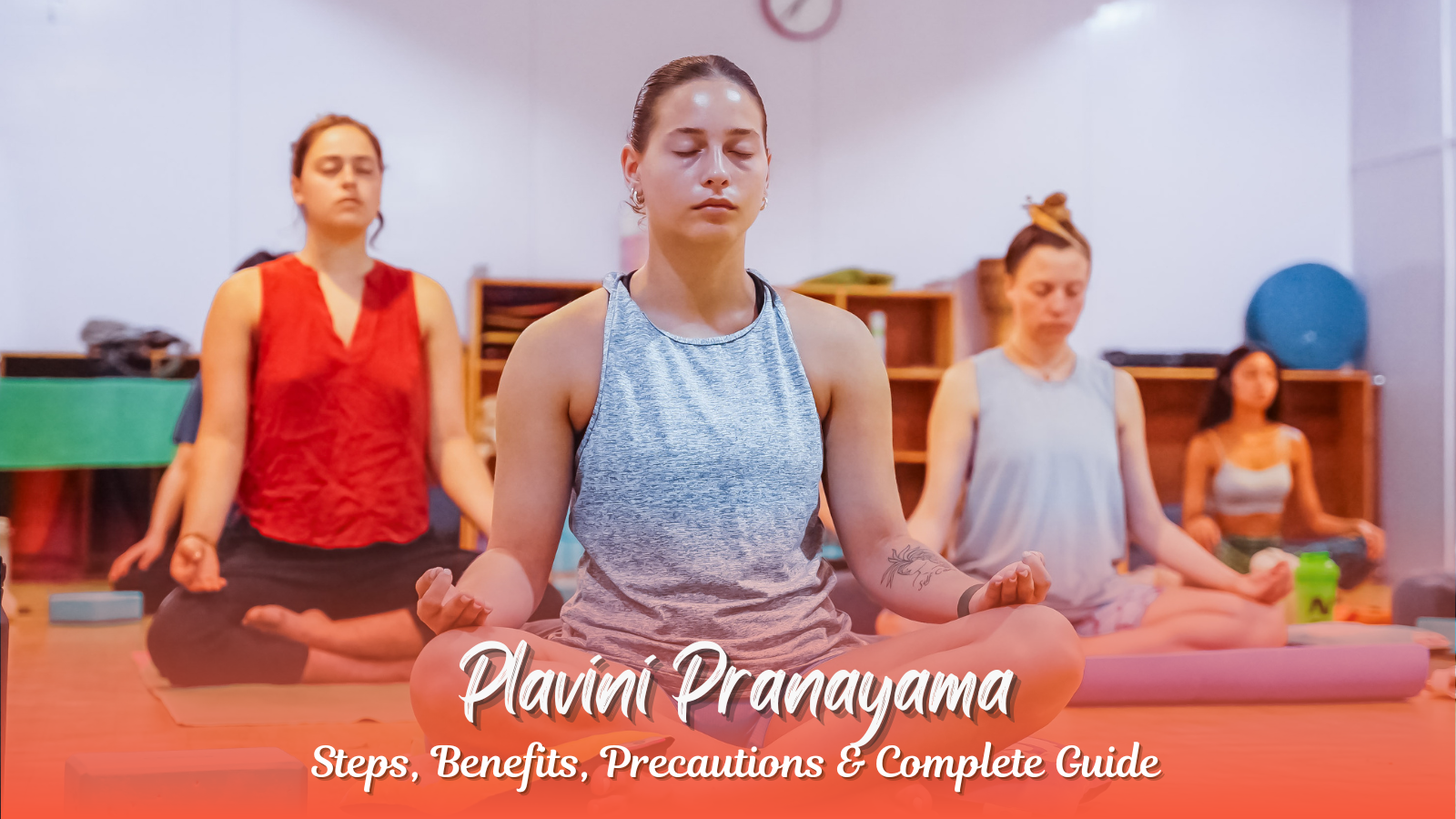There is the practice of breathing with mind, body, and spirit, namely Pranayama, which is one of the most potent yogic concepts. Plavini Pranayama is one of the most difficult pranayama techniques, unique and rare amongst the high-tech ones. In many books and articles, it has been referred to as the yogic art of floating, as ancient scriptures state that a yogi mastering Plavini would be able to float on water with ease for hours.
Although many practitioners find such mystic advantages intriguing, Plavini is not only a means to benefit physically and have more control over your own body, but also an effective method to cleanse and energize the organism, bringing it closer to the state of meditation. This article will bring you through how to practice Plavini Pranayama, the benefits, precautions, and frequently asked questions to learn all about this ancient breathing practice in Yoga.
What is Plavini Pranayama? (Floating Breath Explained)
The name of this word Plavini is a derivative of the Sanskrit root Plu, which means to float. Plavini: In yogic practices, this is commonly known as the floating breath, since a practitioner draws air into the stomach and the lungs, thus making the body buoyant. Given appropriate exercise, through this special method, we can learn to float in water without effort, and that is why most people also refer to it as the art of yogic floating.
Plavini Pranayama is explained in the classical texts of yogis such as the Hatha Yoga Pradipika and Gheranda Samhita as one of the more advanced pranayamas. It is perceived as a cleanse of the digestive system, a metabolism enhancer, and used to stabilize the inner organs. Even traditional yogis believed that the knowledge of Plavini could make life time longer, their immunity stronger, and could assist them in manifesting higher levels of consciousness.
As opposed to normal breathing mechanics, plavini does not merely concern inhalation and exhalation of air; it also deals with the process of swallowing and retaining air in the stomach, resulting in an airy and weightless sensation all throughout the body. The reason is that there are some advanced pranayamas practised along with this, and the others include Kevali Pranayama.
Plavini Pranayama is also linked to general well-being by modern yoga masters. It enhances the capacity of the lungs, facilitates emotional balance, and gets the mind ready to meditate. Plavini is taught at many yoga schools, notably the Best Yoga School in Rishikesh, India, as an advanced practice, such as the 200 Hour Yoga Teacher Training in Rishikesh or the 300 Hour Yoga Teacher Training in Rishikesh. And, in short retreats, some even offer guided practice e.g, 3-Day Yoga Retreat in Rishikesh, so even the curious learners or spiritual seekers can get to know it.
Metaphorically speaking, more than a breathing exercise, Plavini teaches the gateway to mastering prana (life-force energy). When taken in a disciplined manner and trained by a specialist, it can make meditation more thorough, stimulate the body, and form the gateway to spiritual illumination.
Plavini is not really just a breathing exercise; it is a gateway to the mastering of prana (life-force energy in the form of breathing). With training and when practiced diligently, it has the potential to further meditation, enhance physical health and vitality, and open the way to spiritual awakening.
How to Practice Plavini Pranayama Step-by-Step
Prior to laying out the procedure, it should be mentioned that Plavini Pranayama is one of the advanced techniques and should be performed under instructions issued by an older yoga instructor. One must avoid Plavini until the other simple pranayamas, such as Anulom Vilom, Kapalabhati, Bhastrika are learnt by the learner.
Here is a step-by-step guide for Plavini Pranayama:
Stage 1: Preparation
- Take a comfortable posture of meditation, like Padmasana or Siddhasana.
- Maintain the spine straight, shoulders in a relaxed position, and soft-closed eyes.
- Training should be based in a peaceful, clean area or by the water when trying out the method of floating.
Stage 2: Inhalation
- Breathe slowly in and out by using the nose.
- Open the chest as wide as possible, and give the air a chance to be held in the stomach, nearly like blowing up a balloon.
- As opposed to other pranayamas, in this one, the focus is on slowly swallowing air into the stomach.
Stage 3: Retention (Kumbhaka)
- Keep the wind in without stress.
- The belly is supposed to be open, leading to lightness of the body.
- Here, think about the energy that is increasing inside.
Stage 4: Exhalation
- Let the breath slowly release from the nose.
- Let the body completely relax between rounds.
Stage 5: Repetition
- At the commencement, practice 5-7 rounds.
- Over time, the length of retention can be intensively prolonged by the practitioners.
Note: Attempting Plavini in water, yogis got into the habit of doing it in rivers or ponds, stuffed the belly to the gills with air, and floated along weightlessly. Nevertheless, it is only supposed to be when it is under the supervision of experts.
Plavini Pranayama Benefits for Body, Mind & Spirit
Plavini offers both spiritual and physical benefits. There are some major advantages as well, and these are as follows:
1. Physical Benefits
- Better digestion: Aids in cleaning the stomach and intestines, so there is less indigestion and lower acidity.
- Improves lung capacity: widens the airways and the lungs as well as strengthens the breathing organs.
- Helps to become buoyant: Yogic books state that by this, he or she can easily float on water.
- Increase immune system: Increases pranic energy so that the body becomes less susceptible to disease.
- Slows down aging: Once the oxygen circulation and vitality are enhanced, it slows down the process of getting old.
2. Mental and Spiritual benefits
- Relax the mind: Deep breathing is a stress and anxiety reliever.
- Increases meditation: Remains in the mind, allowing for the calm inward focus.
- Balances prana (life-force energy): Equalizes the prana-energy channels (nadis) in the body.
- Aids higher states of consciousness: Believed to stimulate inner awareness & intuition.
Plavini Pranayama Precautions & Safety Tips
Plavini, it would be well to observe that, just as with other advanced yogic practices, they should be executed with caution. These are some of the key Pranyama precautions:
- Never train your stomach full. Try to leave at least 3/4 hours’ gaps after meals.
- Initiatives are not advised to engage in excessive retention of air due to the dizziness that may come along.
- Patients with asthma, heart disease, high blood pressure, or stomach-related disorders are advised to approach a physician before practicing.
- Do not engage in practicing in dusty or noisy areas.
- Do not float in the water without good enough training and supervision.
- When improperly practiced, it can lead to uneasiness, as it does with bhastrika pranayama side effects, such as hyperventilation or tiredness.
Plavini Pranayama vs Kevali Pranayama: Key Differences
There is confusion between Plavini Pranayama with Kevali Pranayama among many practitioners. Although they are both advanced practices, they are used in different ways:
Plavini Pranayama: this is aimed at retaining air in the stomach, beneficial in buoyancy and digestion.
Kevali Pranayama: Called the breathless state, the achievement of which is the natural retention of breath by the yogi, entering into deep meditation.
Both of the methods are sophisticated, and they need the controlled direction of an experienced yoga school.
Learn Plavini Pranayama in 200 Hour Yoga Teacher Training in Rishikesh
In case you are actually interested in being serious with exercising Plavini Pranayama, then it is suggested that you join a Yoga School in Rishikesh. Yoga is one of the most popular disciplines, which also contributes to the great popularity of Rishikesh, the so-called Yoga Capital of the World, which hosts some of the best yoga schools in India.
These are the possible structured learning:
- 100 Hour Yoga Teacher Training in Rishikesh: The best option when starting.
- 200 Hour Yoga Teacher Training in Rishikesh: The globally accepted foundation course.
- 300 Hour Yoga Teacher Training in Rishikesh: This is advanced training to intensify your practice.
- 3 days yoga retreat in Rishikesh: Short programs to detox and relax.
By Training with the Best Yoga Teachers in Rishikesh, you can learn with authentic traditions with the help of master masters who are experienced and safe in learning great techniques such as Plavini.
Plavini Pranayama Images
Yoga exercises can be explained easily with the help of visual instructions. Although education by a teacher is the best practice, most yoga schools offer Plavini Pranayama images so that learners can see how they ought to orient their bodies and breathe. Never memorize or expect an image to accurately define itself. Compare it with correct guidance.
Plavini Pranayama FAQs (Beginner’s Guide)
1. How to perform Plavini Pranayama?
Plavini consists of forceful drawing of air into the lungs and into the stomach, keeping it awhile, and releasing it gradually. It must be done in a seated position or even floating in water with expert instructions.
2. What are the benefits of Plavini Pranayama?
It aids in digestion, strengthens lung capacity, immunity, decreases stress, and is reported to increase life expectancy as well as aid spiritual development.
3. What is the Plavini Pranayama in water?
Plavini enables the practitioner to float in the water with ease, where one inhales air until the stomach and the lungs are full. That is the reason why it is also referred to as the floating breath.
4. What is the Miracle of Pranayama?
The miracle behind pranayama is that of controlling prana (life force). Through breath control, yogis not only become healthier and have a calmer mind but also gain supernatural powers such as being able to withhold their breath longer and an increased awareness.
Final Thoughts: Why Practice Plavini Pranayama?
Named Plavini Pranayama, this unique and very strong breathing discipline can improve not only physical health, but spiritual consciousness as well. Although some people are mesmerized by the idea of floating on water, the theory behind the whole aspects of Plavini is balancing the prana and advancing meditation. It is an intermediate practice, unlike the simplest ones, and is usually presented in combination with Kevali Pranayama, other advanced yogic types of breathing.
When it comes to obtaining authentic learning, joining the Best Yoga School in Rishikesh can matter a lot. In Rishikesh, the so-called yoga capital of the world, there are numerous established schools that provide training in the traditional methods. Be it a 100 Hour Yoga Teacher Training in Rishikesh, a 200 Hour Yoga Teacher Training in Rishikesh, or an advanced 300 Hour Yoga Teacher Training in Rishikesh, you will find programs that operate in a structured format that focuses on pranayama, meditation, and philosophy to your core knowledge.
With limited time at hand, a 3-day yoga Retreat in Rishikesh or a short course at the best yoga school in India can help you in exploring the pranayama techniques, such as Plavini, in a comfortable and healthful setting. The programs also do not concentrate on the asanas, but also give information on pranayama precautions, so you get to know how to practice them properly without the fear of feeling discomfort and even the side effects, like occasionally being experienced on the Bhastrika Pranayama.
The way of pranayama leads finally not only to physical perfection but also to spiritual enlightenment. Plavini Pranayama, with the right instructions, patience, and practice, will make your yogic life worthwhile, strengthen bodily necessities, and create an entry point to new levels of awareness.


